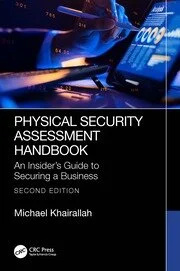Project Roles Defined
Concerning a large security system, four major players typically get involved: the end user, the dealer/integrator, a consultant and the manufacturer of the security equipment. Balancing end user objectives and budget with available technology and project schedules spark a creative environment where all players work to make a profit and give the end user a security system that meets his or her needs.
End User Team
The number of people will vary depending upon the complexity of the project. The security manager, information technology (IT) professional, facility manager, human resource (HR) manager, controller, purchasing manager and others all may be part of the process. Each has a particular knowledge base and a particular interest in the outcome. To have a successful project, these groups must come together early and find a common ground.
The security manager usually has the best handle on overall security needs, facility risks and most current knowledge of the products and systems available. The IT professional becomes involved when the security system will occupy space on the company’s network. He’s concerned about the amount of bandwidth required as well as support of a new platform, operating system or database. The HR manager is concerned about privacy issues and impact on the employee enrollment process. The facility manager is concerned about equipment location, and if his staff must maintain the system. The controller wants to stay within budget and is concerned with system life expectancy and overall return on investment. The purchasing manager wants the best price.
Consulting Engineer
At times, the end user enlists the services of a consulting engineer. The primary role of the consulting engineer is to evaluate the end user’s risks and needs. Based on that analysis, they bring together the various manufacturers’ solutions that meet the needs within budget. End users rely on them for their expertise and their familiarity with products. The consultant often presents several solutions and makes a recommendation.Dealer/Integrator
The integrator/dealer’s role is often the broadest — the intermediary between the manufacturer and the end user. As a reseller, this person will install, commission and, in most cases, maintain the system. He is responsible for the proposal and bid, and ultimately will have to make the system work as specified. He will train the end user’s staff to use the systems. As a result, he must employ a support staff that is highly qualified on whatever system is to be installed.He will likely be the point of contact for the consulting engineer should there be any questions regarding the proposal. If a presentation is required, he spearheads this, sometimes with the assistance of the manufacturer.
The dealer/integrator may also play the role of the consulting engineer. These projects are often referred to as “design/build.” If an end user has a strong relationship with a particular integrator/dealer, he may choose to let him evaluate the facility’s needs and propose a solution, without using a consultant and without ever going out for bids.
Manufacturer
Manufacturers develop products that meet the demands of the end users. They make these available through sales channels. One of the most often used channels is a group of integrator/dealers. Ideally, the manufacturer provides reliable hardware and software coupled with all of the resources necessary to support the integrator/dealer in his goal to satisfy the consulting engineer and ultimately, the end user. These resources include product application and installation training, help with reviewing the specification, technical support and assistance with a presentation to the customer and/or consulting engineer.
With the role players identified, the next step is to make it all come together with a win for everyone.
Conflicts and Solutions
The objective of the manufacturer is to sell products and get the highest possible profit margin. Manufacturers do not normally share in any of the installation revenue. The manufacturer will put substantial effort into influencing the development of a specification to the extent that they are somehow favored or the very least named as an acceptable manufacturer. All the better if the specification adopts certain features or uses nomenclature, which gives a competitive advantage. The conflict centers on the best interest of the end user. The influence is good when manufacturers provide information to consultants that help them do a better job for their customer. Making sure that consultants are current is important. Often, manufacturers are the best source of product and technology information.
Manufacturers recognize it’s impossible to test products under all conditions and all applications. In rare cases, an end user might experience some problems. The manufacturer must work closely with the dealer/integrator to identify and resolve problems. The manufacturer has a responsibility to ensure the system operates in the manner in which the information provided says it should operate.
Doing the Homework
The consulting engineer must make the end user’s needs paramount. He has to perform a realistic and detailed assessment of his customer’s facility and then develop a plan and a specification that takes into account all needs, including threats, technology, budget, schedules, business operations, etc. Sometimes consultants specify technology that doesn’t exist, that’s unproven, way beyond customer requirements, too expensive or just impractical. Sometimes, they choose to shortcut the process by using a “boilerplate” specification, perhaps provided by a particular manufacturer.
A consultant’s job is not done until the system is selected, purchased, installed, commissioned and fully operational — meeting all requirements of the original specification.
Wearing Many Hats
The integrator/dealer is an agent of manufacturers. Most integrators carry more than one line in any given security system discipline. In this age of acquisition and consolidation, it’s less risky to carry more than one line. Of course this means the integrator/dealer needs a staff qualified in a wide range of products and keeps more inventory for service and repair. The wider approach gives him a greater chance to meet a given specification, which may be written around a particular brand of product or may require a feature, which is only available from a certain set of manufacturers.The response to the specification will come from the integrator, at times with some assistance from the manufacturer, particularly in cases where the integrator is not comfortable addressing an item in the specification.
The integrator has the closest and longest lasting relationship with the end user in terms of response to the specification, during the installation and system commissioning as well as training and system maintenance. In the long run, upgrades and add-ons often are the most financially lucrative part of a project.
In design/build projects, the integrator/dealer also must play the role of the consulting engineer. Even though an independent consultant may not be involved, and a detailed specification will not be developed and sent out for bid, the integrator should still insure there is a clear understanding of what he will provide the end user. If he plays both the consultative role and installer role with integrity, his relationship with the end user will flourish.
Planning and Evaluation
The end user’s role here is to ensure needs of all internal constituents are met. This includes security, IT, HR, facilities, finance and any others. This can be a difficult task, especially in a large facility; and even more so in a company whose operations are spread over a large geographical area.Performing this role within the constraints of a budget further complicates the process in regard to the manufacturer and the integrator/dealer.
The bottom line: allow time to plan and evaluate the information supplied by the other outside players. Designate someone as the “point” person, to whom questions can be directed. If a consulting engineer is used, there should be constant interaction with him.
Once the system is selected and installed, there is still work. Even something seemingly simple like designing a photo ID badge can involve a large number of people and a lot of time.
Like the integrator/dealer’s role, the end user’s role is a broad one to be played for the life of the system. Involvement at the front end is crucial. Careful selection of a consultant, a dealer/ integrator and a manufacturer will make the difference between a successful project and a painfully expensive failure.
Looking for a reprint of this article?
From high-res PDFs to custom plaques, order your copy today!






